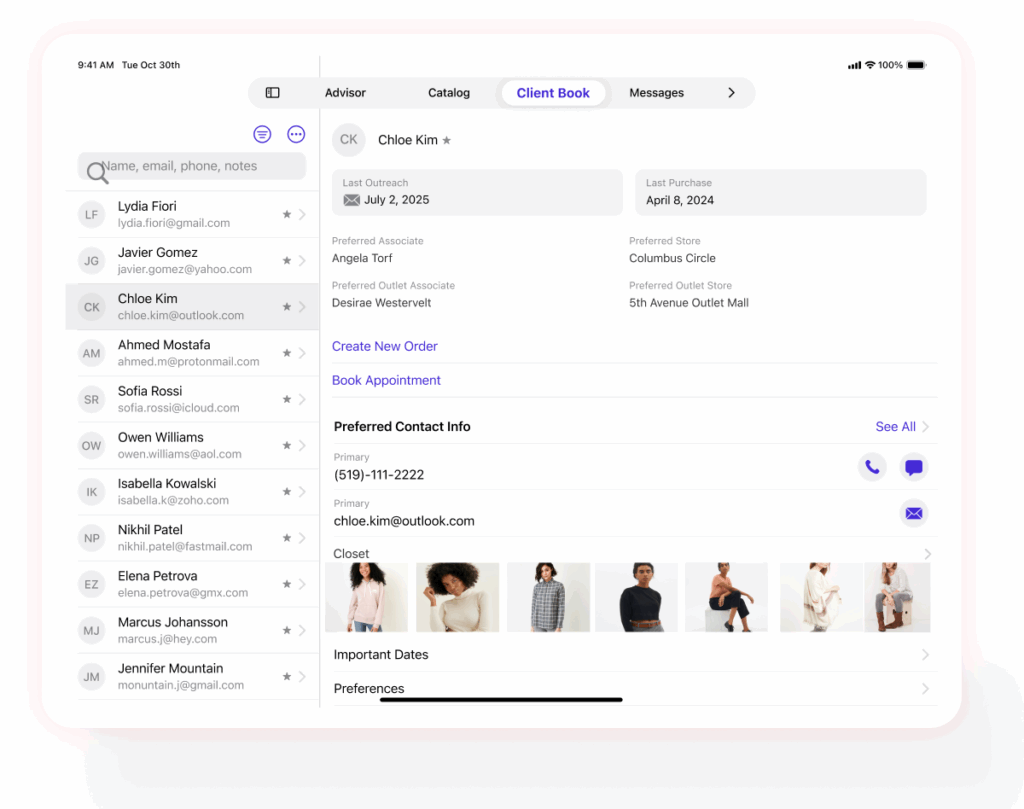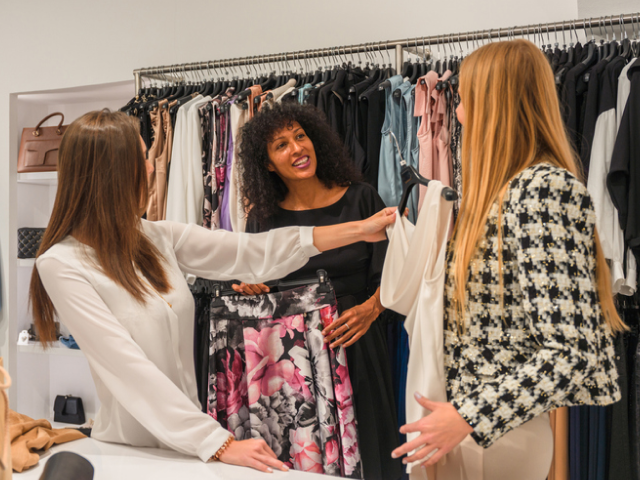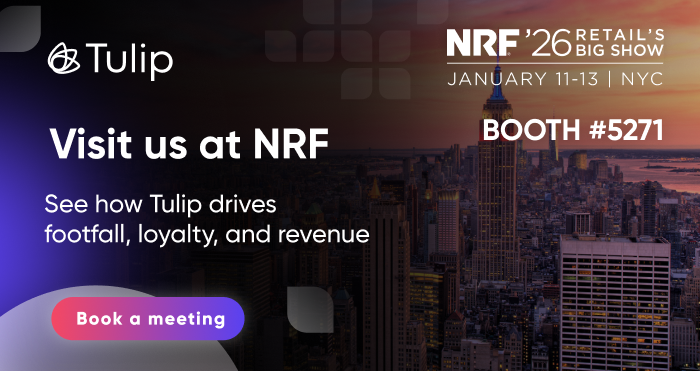The art of combining data with human connection
Clienteling is a process that uses customer data and genuine human connection to create personalized shopping experiences.
Instead of just waiting for customers to come to them, sales associates use a systematic approach to build long-term relationships, which leads to increased sales and customer loyalty.
It’s about moving from a simple transaction to a meaningful, ongoing conversation.
This blog focuses on how clienteling works in practice, but to learn more about the fundamentals of clienteling, check out our Beginner’s guide to clienteling in 2025.
Data collection
What data is collected?
Clienteling starts with data, which is information about your customer. The most common data collected includes customer preferences, past purchases, clothing sizes, and even lifestyle hints they’ve shared. This information helps a sales associate understand what a customer likes and what they might be interested in in the future. Collecting this data is the first step in creating a personalized experience that goes beyond a standard transaction.
Where does it come from?
The data collected for clienteling comes from several places. The most common is from in-store interactions, where a sales associate can learn about a customer’s preferences in a face-to-face conversation. Other sources include online browsing behavior, eCommerce wishlists, and direct customer sign-ups or opt-ins. A modern clienteling system might have this data available to sales associates in real-time on a tablet or a smartphone, so they can access it on the go. This is a big change from the old days when sales associates used to keep customer information in binders or on sticky notes!

Personalized engagement
Once the data is collected, it’s used to create a personalized shopping experience. A sales associate can greet a customer by name, recommend products based on what they’ve bought before, and let them know about new arrivals that fit their style. This kind of thoughtful service can make a customer feel valued and understood. It’s also an opportunity for the sales associate to show off their expertise and help a customer find exactly what they’re looking for, rather than just pointing them to a general department.
Omnichannel communication
Another key part of personalization in clienteling is communicating with customers using the methods they prefer. This is called omnichannel communication. Some people might prefer a text message, while others might like an email or WhatsApp. By adapting to the customer’s preferred channel, you can ensure your messages are seen and welcomed, not just an interruption.
Human connection
Why is it vital?
Even though data is a big part of clienteling, the human connection is what truly makes it special. Data can give you the facts, but a real conversation builds a relationship. Studies show that 78% of shoppers are more likely to buy from a brand again if they receive a personalized message, and this is where human connection is key. An automated message can’t build trust or rapport in the same way that a friendly conversation can.
The role of associates
In clienteling, sales associates are more than just cashiers. They are trusted advisors who build a relationship with the customer. They can provide expert advice, offer style tips, and help a customer feel comfortable and valued. This trust is what turns a one-time shopper into a loyal customer who comes back again and again.
Proactive selling
Shift from reactive
Traditionally, a sales associate would wait for a customer to ask for help. With clienteling, this changes to proactive selling. Associates use the data they’ve collected to anticipate customer needs and reach out to them. This can be as simple as sending a new customer a welcome message or as strategic as informing a loyal customer about a special promotion on a product they’ve been looking at.
Outreach examples
There are many ways to proactively reach out to a customer. This could include a personalized text message about a sale, a simple email check-in, or a phone call to let them know a new collection has arrived. These outreach efforts should always be done through the customer’s preferred communication channel and be based on their unique profile. This way, the outreach feels helpful and personal, not like a sales pitch.
Bringing it all together
Clienteling is more than a simple sales technique; it’s a strategic approach to retail that uses both technology and human interaction.
By collecting customer data and using it to personalize every interaction, sales associates can build strong, lasting relationships. This shift from reactive to proactive selling helps create loyal customers and turns one-time shoppers into brand fans. In essence, clienteling is the art of combining data with genuine care to deliver an unforgettable shopping experience.
Learn more
To learn more about how clienteling as a business practice, checkout this Beginner’s guide to clienteling in 2025.
If you’re ready to see how clienteling can transform your business, book a demo with our team today to see Tulip Clienteling in action.


